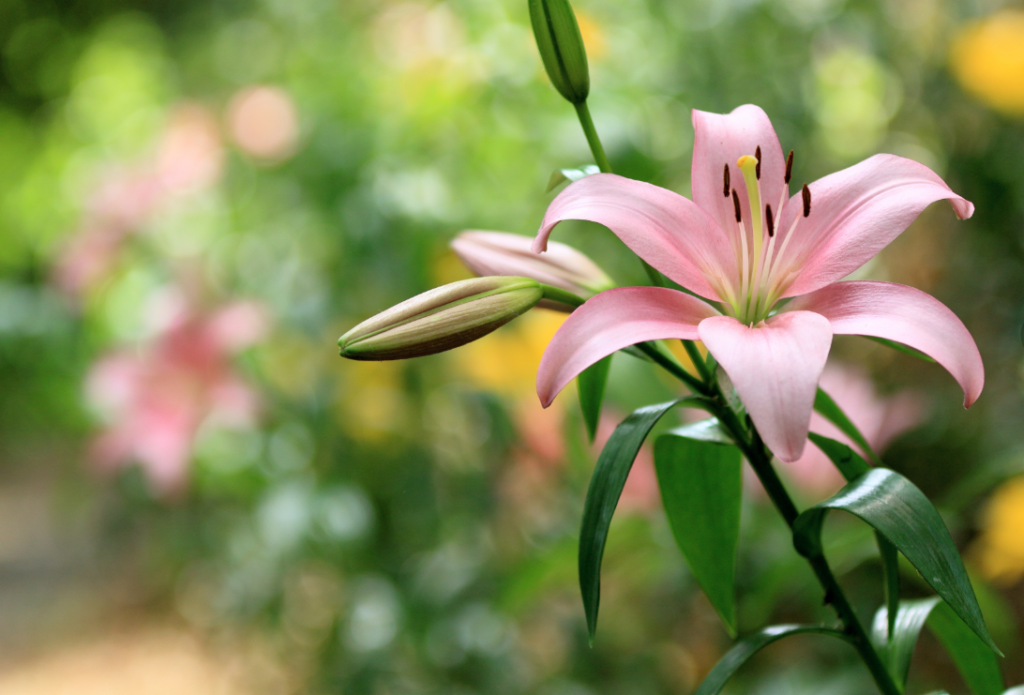
Lily flowers are more than just pretty blooms with delicate petals – they carry an array of symbolic meanings that have fascinated cultures for centuries. From ancient Egypt to modern-day weddings, the lily has been used to represent purity, passion, and everything in between. But what do these symbolic associations really mean? In this article, we’ll dive deep into the world of lily flower meaning, exploring the historical and cultural significance of these beloved blossoms. Get ready to decode the messages hidden within their colorful petals!
Lily Flower Meaning

The Lily flower holds a rich symbolic significance that transcends cultures and time, making it a cherished emblem of purity, beauty, and renewal. Renowned for its elegance and captivating fragrance, the Lily flower meaning extends beyond its aesthetic appeal. Embodying purity and innocence, it symbolizes new beginnings, making it a popular choice for various occasions and ceremonies. In art, literature, and religious contexts, the Lily’s representation as a symbol of virtue, grace, and divinity remains profound. Understanding the Lily flower meaning reveals its enduring allure and universal admiration as a timeless symbol of purity and spiritual rejuvenation.
Purity
The Lily flower has long been associated with the symbolism of purity. Its pristine, unblemished petals and graceful appearance have made it a quintessential representation of purity across various cultures and traditions. Often linked to ideas of innocence, cleanliness, and untainted beauty, the Lily’s symbolic meaning of purity resonates deeply. It serves as a potent emblem, embodying the essence of a pure and virtuous nature, making it a cherished symbol in art, literature, and spiritual contexts worldwide.
Innocence in Bloom
The lily is often associated with innocence, particularly in Christian traditions where it represents the Virgin Mary’s purity.
Devotion
The trumpet-like shape of the lily is said to symbolize the announcement of good news, making it a natural symbol of love and devotion.
Rebirth and Renewal
The lily has a long history as a spiritual symbol, representing rebirth and growth in many cultures around the world.
Lily Flower Color Meanings

Lilies are commonly associated with a variety of meanings, including purity, innocence, beauty, and renewal. The specific symbolism of the lily can vary depending on the color and type of the flower. For example:
- White lilies symbolize purity and innocence – just like a newborn baby or freshly laundered sheets.
- Blue lilies, while relatively rare compared to other colored lilies, carry their own distinct symbolism. Blue is often associated with tranquility, peace, and calmness. When applied to the symbolism of the Lily flower, blue lilies can represent a sense of serenity, inner peace, and harmony. They may also symbolize a sense of spirituality, depth, and mystery due to the uniqueness of their color in nature. Blue lilies can convey a message of calmness amid life’s challenges or represent a quest for spiritual growth and enlightenment. Additionally, in some cultures, blue flowers are associated with notions of trust, stability, and confidence, which might further influence the symbolism of blue lilies.
- Pink lilies are often associated with love, admiration, and femininity – think of them as the flower equivalent of a blush brush.
- Orange lilies represent enthusiasm, passion, and energy – they’re like a burst of sunshine in your garden or bouquet.
- Yellow lilies embody joy, happiness, and friendship – they’re the perfect gift to brighten someone’s day.
- Red lilies evoke strong emotions such as love, desire, and courage – they’re not for the faint of heart!
- Black lilies (yes, they exist!) are rare and mysterious – they represent elegance and sophistication, but can also be associated with death and farewell.
Lily Flower Type Meanings

Calla Lily Flower Meaning
Calla lilies are often used in wedding bouquets and symbolize beauty, grace, and devotion.
Stargazer Lily Flower Meaning
Stargazer lilies are bold and dramatic, representing ambition, success, and confidence.
Tiger Lily Flower Meaning
Tiger lilies are wild and untamed, representing strength, power, and adventure.
Easter Lily Flower Meaning
Easter lilies are commonly used during the Easter holiday and represent hope, renewal, and resurrection.
What do lilies mean in a relationship?
The meaning of lilies in a relationship can vary depending on the context and cultural symbolism. In general, lilies are often associated with positive qualities such as beauty, purity, and innocence, which can make them an appropriate gift for various types of relationships.
White lilies, for example, are commonly associated with purity and innocence and can be given to express feelings of admiration, respect, or appreciation in a romantic relationship. Pink lilies, on the other hand, can symbolize love, romance, and femininity, making them an appropriate gift for a partner or significant other.
However, it’s important to note that the specific meaning of lilies in a relationship may depend on the personal preferences and cultural background of the individuals involved. It’s always best to consider the recipient’s individual tastes and preferences when choosing a gift.
The Symbolic Importance of Lilies in Ancient Egyptian Culture
Lilies held great significance in ancient Egypt, where they were associated with the goddess Isis and symbolized fertility, rebirth, and purity. The flower was also often depicted in funerary art, representing the restoration of life after death.
Lily Flower Meanings in Greek and Roman Mythology
In Greek and Roman mythology, lilies were associated with various gods and goddesses, including Hera, Apollo, and Artemis. The flower was seen as a symbol of purity, innocence, and beauty. In some stories, the lily was believed to have grown from the milk of Zeus’s wife, Hera.
The Significance of Lilies in Christianity and Other Religions
The white lily has long been associated with Christianity, representing the Virgin Mary’s purity and the resurrection of Christ. In other religions, such as Buddhism and Hinduism, lilies are seen as symbols of enlightenment, compassion, and wisdom.
Lily Flowers in Asian Cultures: From China to Japan to India
Lilies have played significant roles in many Asian cultures throughout history. In China, the lily is associated with good luck and is often given as a gift during the Chinese New Year. In Japan, the flower represents renewal and rebirth and is often used in traditional tea ceremonies. In India, lilies are seen as a symbol of devotion and dedication.
The Cultural Significance of Lilies in Native American Traditions

Lilies were not native to North America, but European settlers brought them over, and they became popular among Native American tribes. For many tribes, lilies represent peace, hope, and new beginnings.
Lilies as National Symbols
Examples from France, Italy, and other countries:
Lilies have been adopted as national symbols by various countries around the world. In France, the fleur-de-lis, which resembles a lily, has been used as a symbol of royalty and power for centuries. In Italy, the white lily is a symbol of Florence, representing the city’s beauty and grace. Other countries that use lilies as national symbols include Canada, Greece, and Poland.
Lily Flower Meaning FAQs
What does the name ‘Lily’ mean?
The name Lily is derived from the Latin word “lilium” which means “lily flower”. The lily flower is often associated with purity, innocence, and beauty, and has been used in various cultures as a symbol of these qualities. In Christian tradition, the lily is also a symbol of the Virgin Mary and is often depicted in art as a representation of her purity.
Do lilies symbolize love?
While lilies are commonly associated with many positive meanings, including purity, beauty, and renewal, the symbolism of love is not typically attributed to lilies. However, different cultures and contexts may interpret the symbolism of flowers differently.
In some cultures, certain types and colors of lilies may be associated with romantic love or affection. For instance, pink stargazer lilies are sometimes used to express romantic love or admiration, while yellow lilies can symbolize friendship and platonic affection.
Overall, while lilies may not be traditionally associated with love in most cultures, they can still convey positive emotions and sentiments that can be meaningful in various contexts.
What color lily means love?
While the symbolism of flower colors can vary depending on cultural and personal interpretations, pink lilies are often associated with love and romance. Pink is a color that is commonly associated with femininity, tenderness, and affection, and it is often used to convey gentle feelings of love and admiration.
Stargazer lilies, in particular, are a popular type of pink lily that are often given as gifts to express romantic love or admiration. These lilies are known for their vibrant pink color and distinctive fragrance, which makes them a popular choice for romantic occasions such as weddings, anniversaries, and Valentine’s Day.
However, it’s important to remember that the specific meaning of flowers can vary depending on the context and cultural background of the individuals involved, so it’s always best to consider the recipient’s individual tastes and preferences when choosing a gift.
